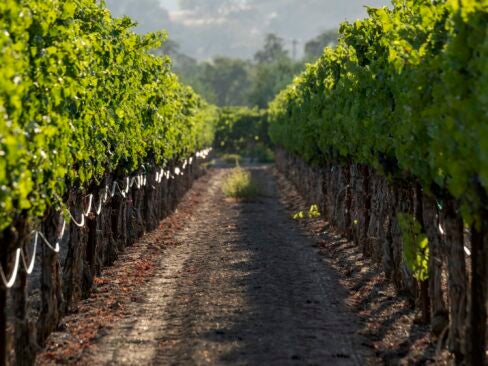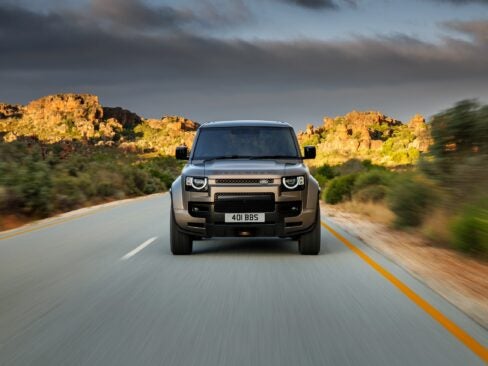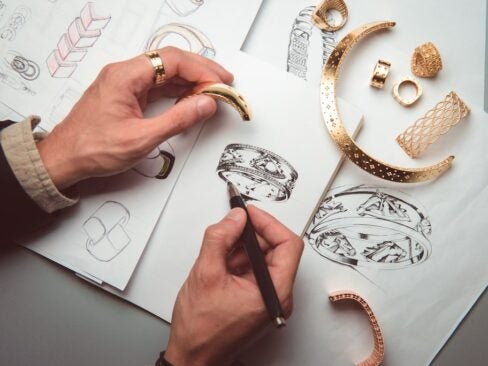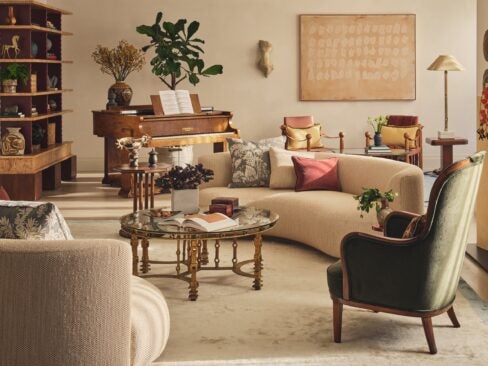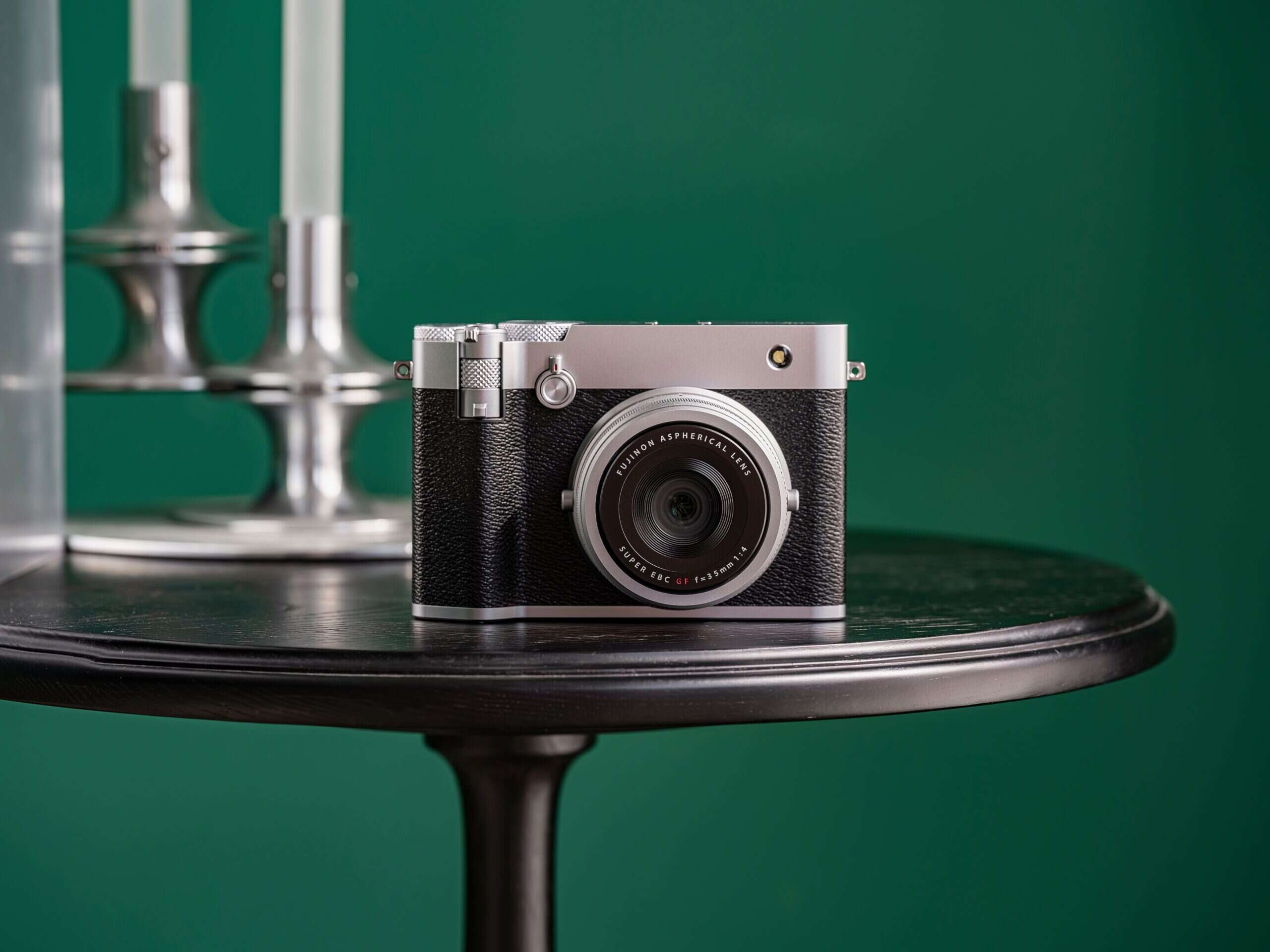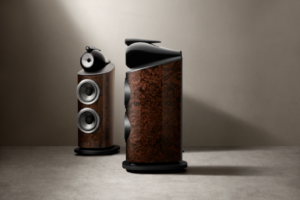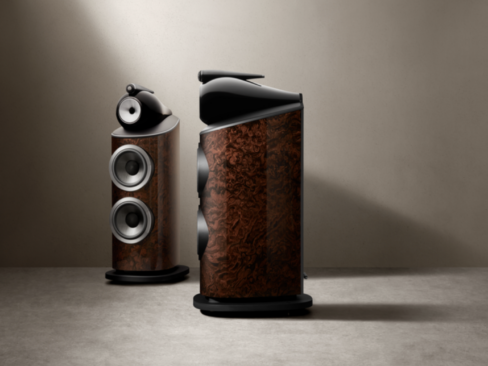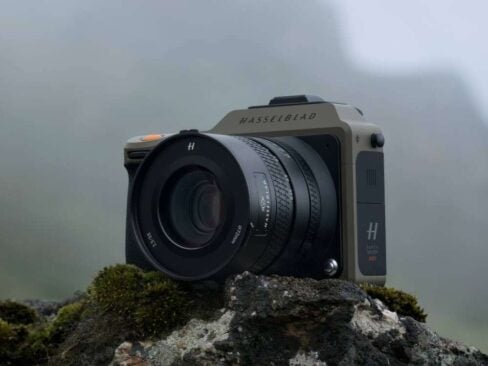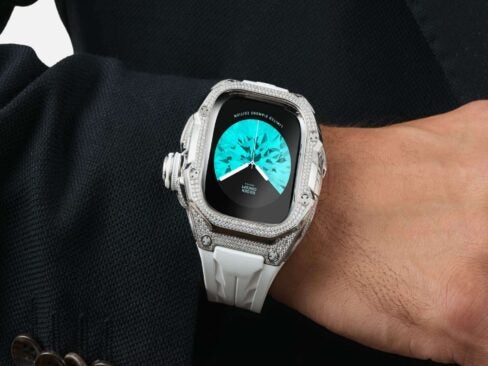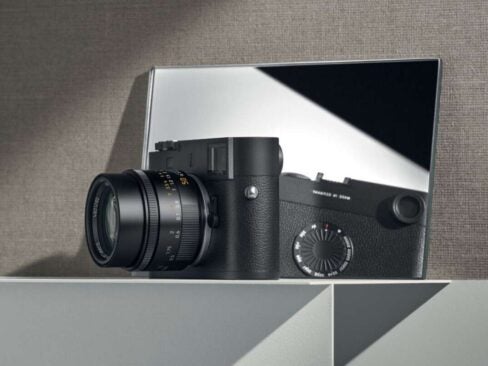For any tech company, being responsible for the next ‘big thing’ must be a dream come true. Be it Apple with the iPhone in 2007, or GoPro in 2014 when action cameras sold like hotcakes. More recently — at least in the digital camera world — Fujifilm has taken the mantle as owner of the zeitgeist with the X100V and, more recently, the X100VI. Last week, Fujifilm revealed the GFX100RF, an all-new camera that maintains the charm of the fixed lens and analogue styling that’s partly responsible for the X100’s success. This version adds a much larger sensor, meaning it’s capable of standing shoulder-to-shoulder with the rest of Fujifilm’s GFX lineup.
For complete newcomers to Fujifilm, its cameras can be split into two camps, the X Series and GFX Series. These are divided by sensor size, so Fujifilm X Series cameras feature smaller APS-C sensors, while the GFX Series use larger medium format sensors. This means Fujifilm’s GFX cameras have higher megapixels and so take much larger images, which can be cropped without losing detail. However, this larger sensor size also means GFX Series cameras are physically larger and more expensive than their X Series counterparts.
The new GFX100RF is a no-brainer for Fujifilm. Capitalizing on the success of the X100 series makes perfect business sense and a higher resolution, more premium version of it is enough to give some fans sweaty palms. But to fully understand the GFX100RF, it’s first worth a few words on the X100 series.
The Rise of the X100
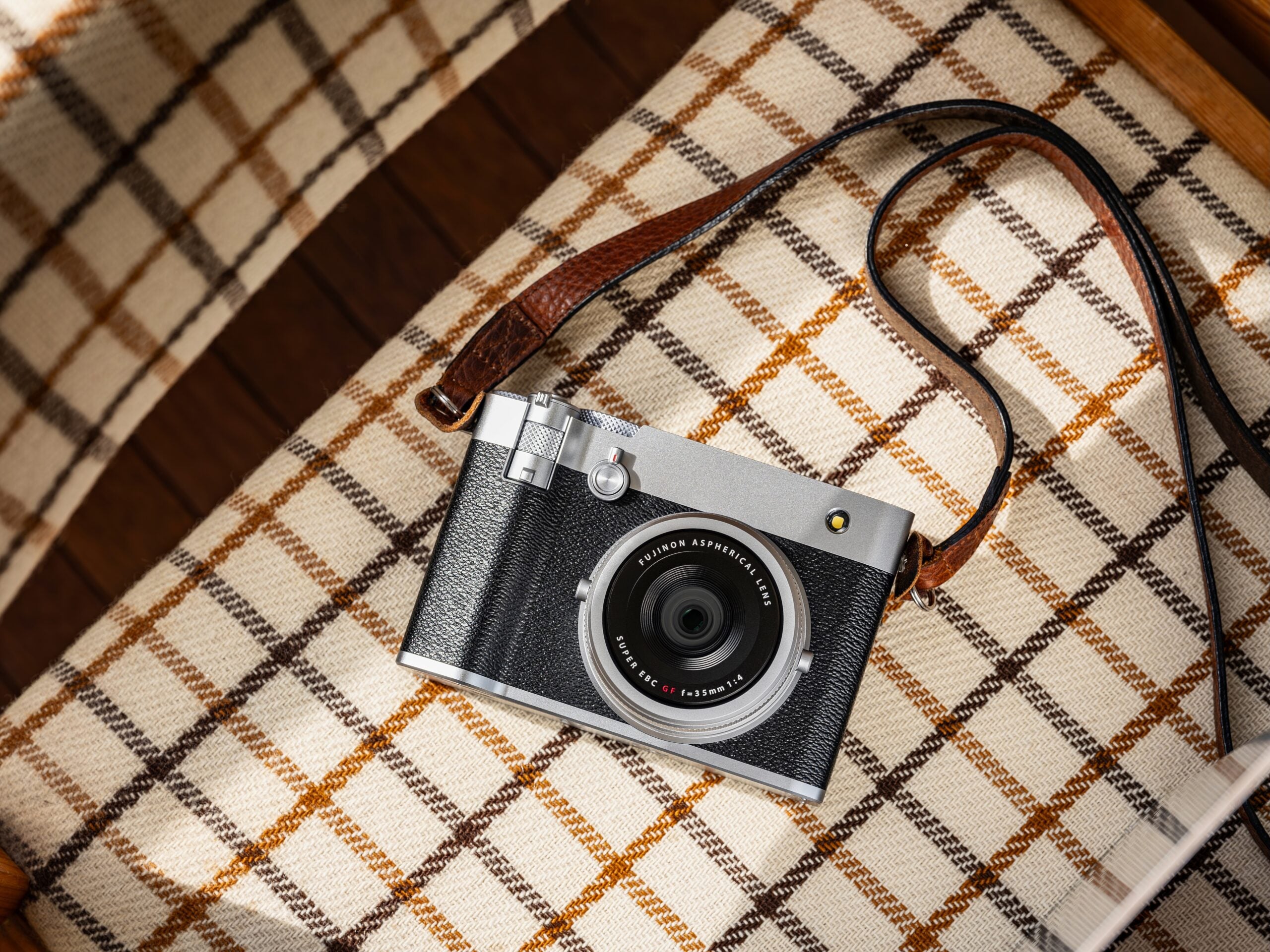
As smartphone cameras improved throughout the 2010s, they destroyed the previously booming market for compact, point-and-shoot cameras. Faced with a rapidly shrinking number of potential buyers, camera companies needed a new niche that sat in a Goldilocks zone: technically capable enough to warrant upgrading from a smartphone, but not reaching the eye-wateringly expensive heights of professional cameras.
Fujifilm has been making X100 cameras since 2011. The small body size and wide 23mm fixed lens meant they were perfectly suited to travel, while the fixed lens ensured users wouldn’t have to spend extra on a lens further down the line. Each new release reviewed well and gained a small cult following, including the X100V, which was released in February 2020 to a smattering of applause. Then in December 2022, out of nowhere, demand skyrocketed.
Thanks to a selection of successful YouTube videos, Instagram Reels and TikToks, the X100V hit the mainstream. Fujifilm, a company that takes pride in its class-leading build quality, struggled to keep pace with demand. The camera sold out everywhere, with waiting lists swiftly stretching to astronomic lengths. Cameras hit the secondhand market for twice the retail price, driving the hype and demand further.
The X100 VI followed, production moved to China, and while demand remained high, with more cameras being produced each day, waiting lists were reduced to manageable levels.
So, where does the new GFX100RF sit in all this?
[See also: Hasselblad Reveals Limited Edition X2D 100C Earth Explorer]
The GFX100RF – The New Kid on the Block
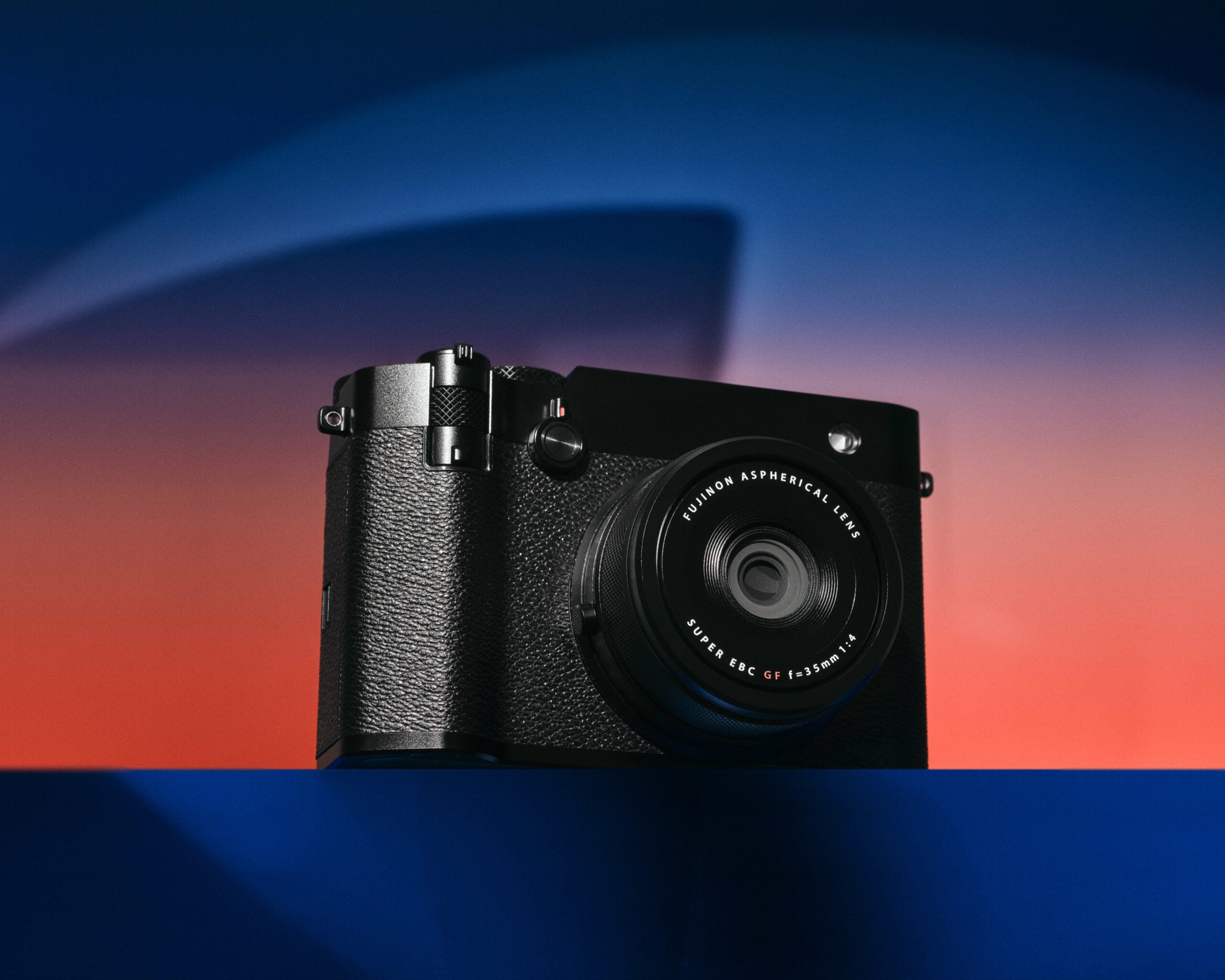
At the Fujifilm X Summit in Prague on March 20, the GFX100RF was revealed as the lightest GFX camera in history. For a medium format camera, a weight of 1.6 lbs is impressive. Along with being the lightest, it’s also the first fixed-lens Fujifilm GFX camera in history. This means instead of having an interchangeable lens system, the GFX100RF possesses a 35mm lens that is permanently attached to the camera’s body.
But while its fixed lens and lack of heft bucks the trend of previous GFX cameras. It’s what’s inside that counts, and the sensor inside certainly lives up to the GFX name etched on the top.
The GFX100RF has a 102-megapixle high-speed sensor, in addition to Fujifilm’s latest X-Processor 5, meaning lots of megapixels and plenty of computing power to push them around.
This GFX 102MP CMOS II sensor is 43.8mm X 32.9mm, considerably larger than the sensor found in standard cameras. This means huge images that can be cropped heavily or printed large, with a wide dynamic range, low noise and impressive sharpness. Users may be using it to snap holiday pics, but if they wanted to, they could blow them up to billboard size with ease.
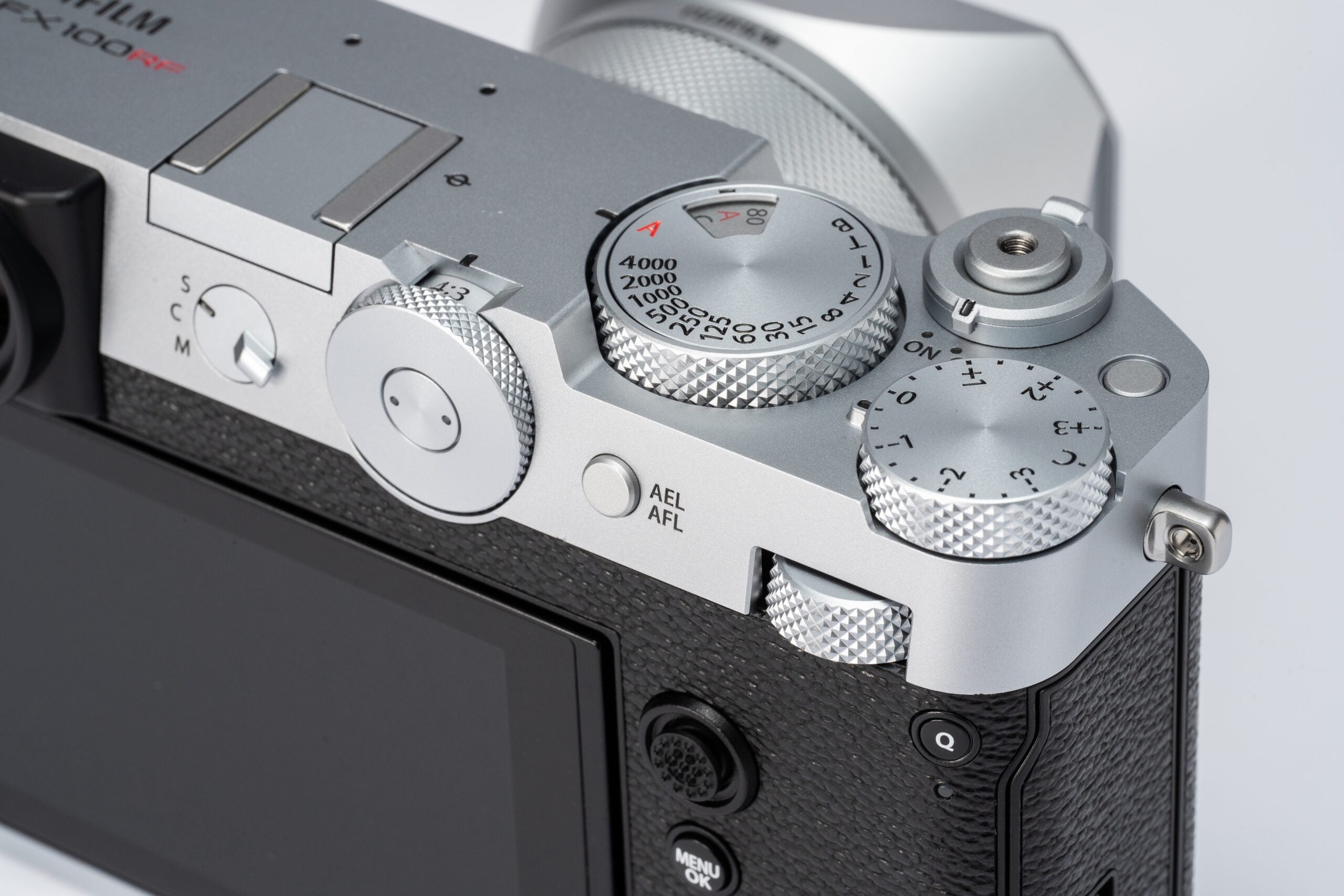
The camera also features a new Aspect Ratio Dial, allowing the user to switch between nine different shooting formats on the fly. Of course, this could always be done afterward in an edit, but using the GFX100RF, I did find that having the physical dial pushed me to experiment and play around with different ratios.
On the topic of dials, Fujifilm wears its analog roots on its sleeve. It values a physical button and dial and each one on the GFX100RF moves with a reassuring and satisfying click. The GFX100RF somehow manages to be impressively light while also having class-leading build quality.
[See also: Leica Unveils M11-D: A $9k Camera with No Screen]
Great Looks and Film Simulations
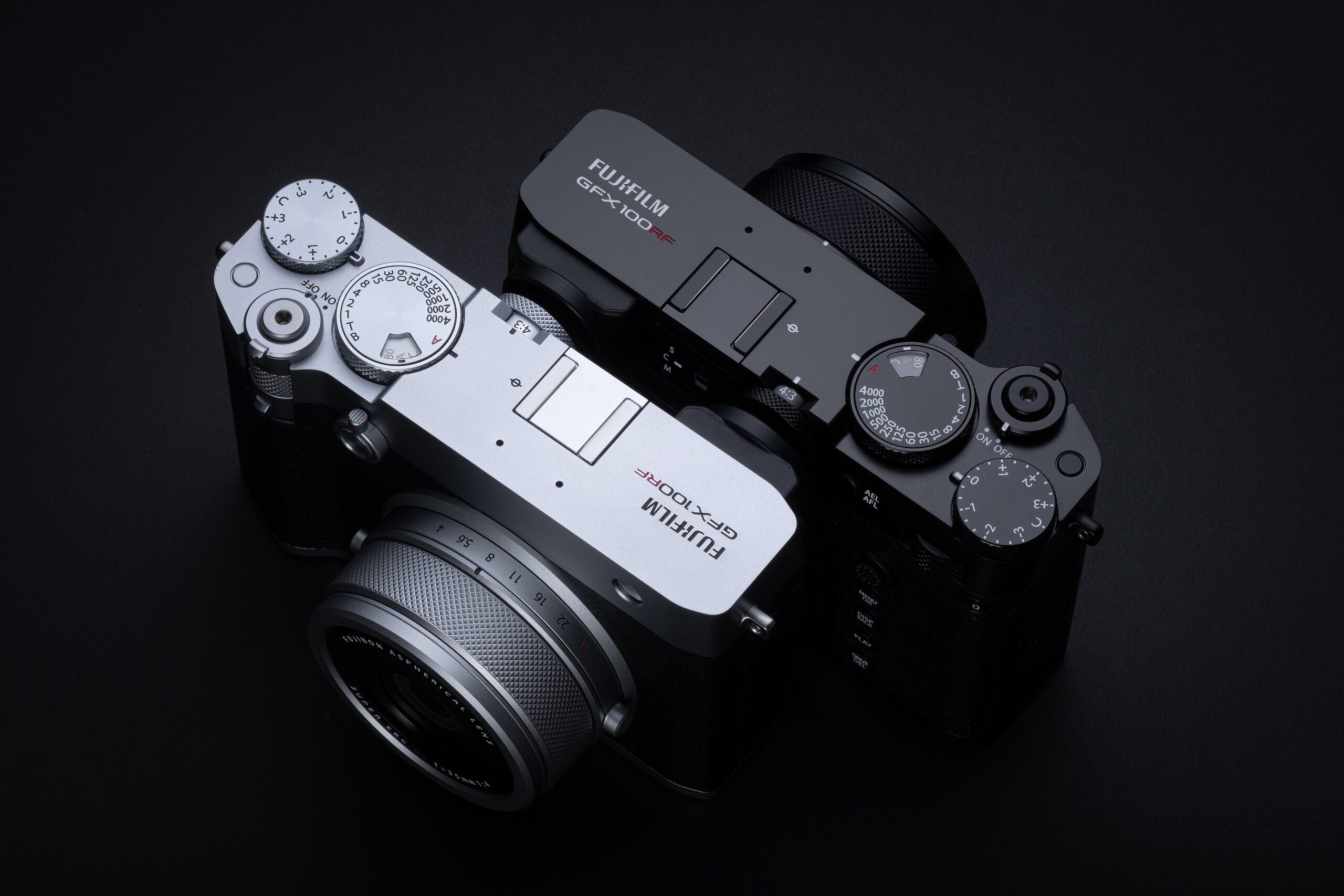
If you had to pick out two factors that helped the X100 to boom in popularity, it would have to be its impressive looks and Fujifilm’s film simulations, both of which are replicated in the GFX100RF.
Despite housing a 100-megapixel-plus sensor, someone out the loop could easily mistake it for a vintage film camera, particularly the silver model. Logos and branding are kept minimal, with just the Fujifilm logo appearing on the top plate, with the camera’s front looking particularly clean.
Regarding the film simulations, the GFX100RF comes pre-loaded with 20 film simulations that have been inspired by real Fujifilm film stocks, like Provia, Astia, Fuji Classic Chrome and Velvia. These are essentially JPEG edits that help recreate the look and feel of film photography. It may not be for everyone, but it can certainly get JPEGs looking great straight out of the camera.
The Ultimate Travel Companion
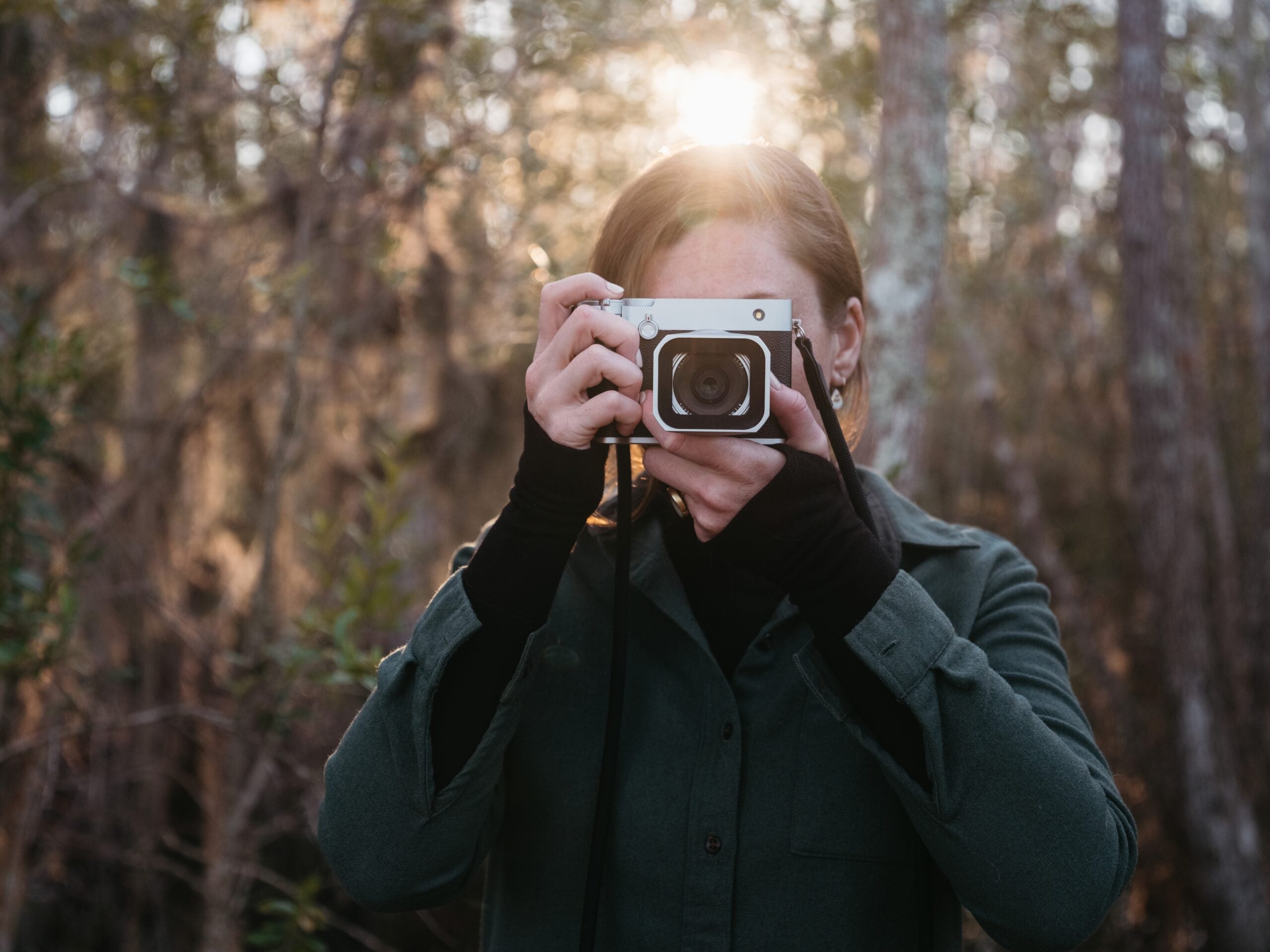
So, who is the new Fujifilm GFX100RF for? First and foremost, this is a premium device. Priced at $4,899.95, the GFX100RF has transcended the ‘Smartphone upgrade’ bracket of the X100IV ($1,599.95) and is firmly in the professional to serious hobbyist range.
Despite the huge sensor size, the GFX100RF remains a fairly compact device. It’s not quite pocketable, but it is certainly portable and able to fit in most bags. It’s also relatively light, so carrying it around all day is not an issue, giving travelers something to think about.
Due to the fixed lens and similar price point, it’s impossible not to compare the GFX100RF to the Leica Q3, which, when it was released in 2023, we described as ‘The Ultimate Travel Companion.’ Since the release of the Q2, Leica has remained almost totally unchallenged when it comes to premium fixed-lens cameras. However, the release of the GFX100RF changes things.
For those looking for an exemplary complete camera system with excellent image quality, great looks and the build quality we should expect from a premium device, the GFX100RF and Leica Q3 both represent exceptional choices. And a little competition in a once stagnant market can only benefit the consumer.
To buy the new Fujifilm GFX100RF click here
If you purchase the camera through the above link, Elite Traveler may earn a commission on the sale.
[See also: Bang & Olufsen Reveals $1,549 Headphones: Beoplay H100]
